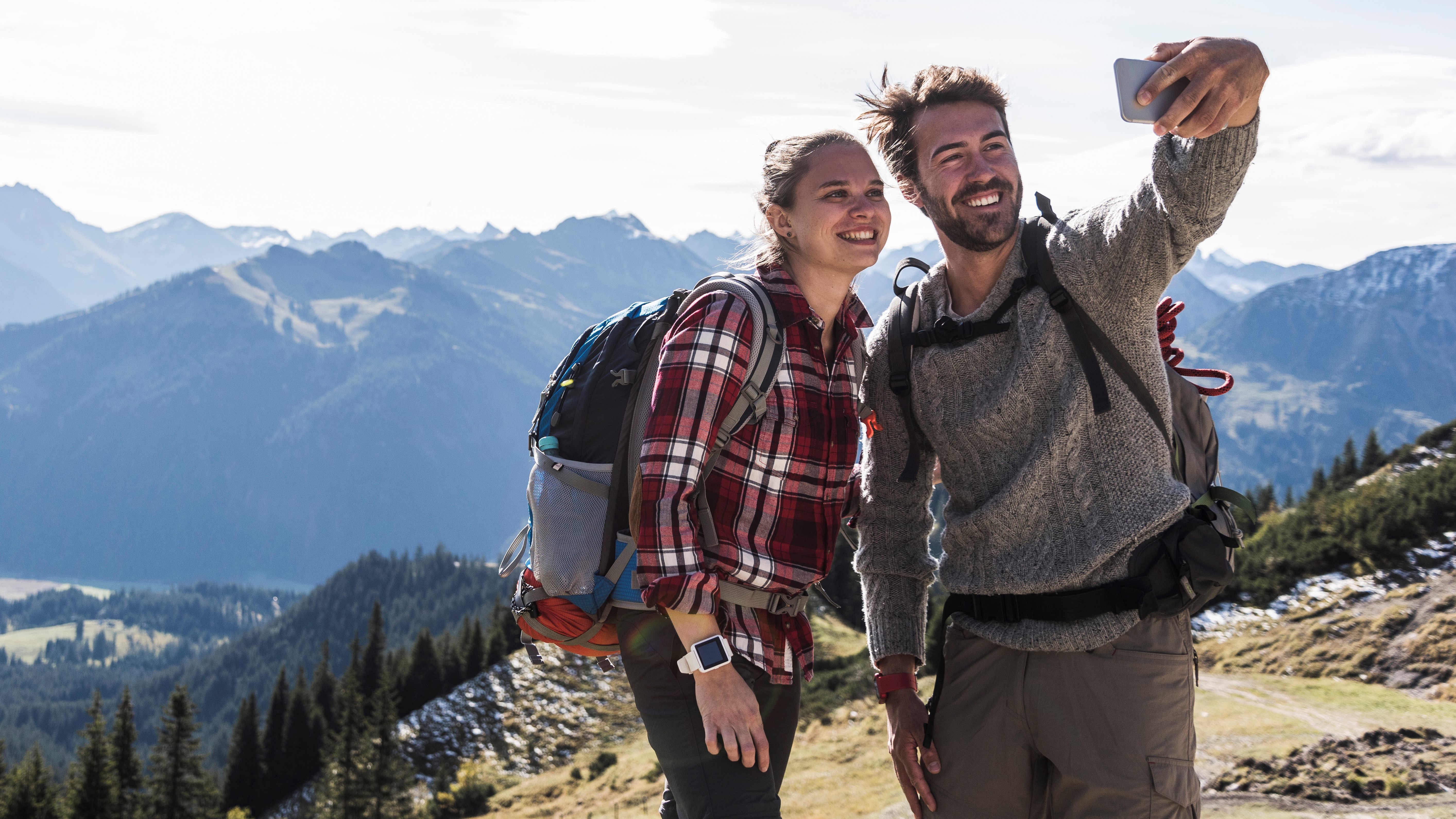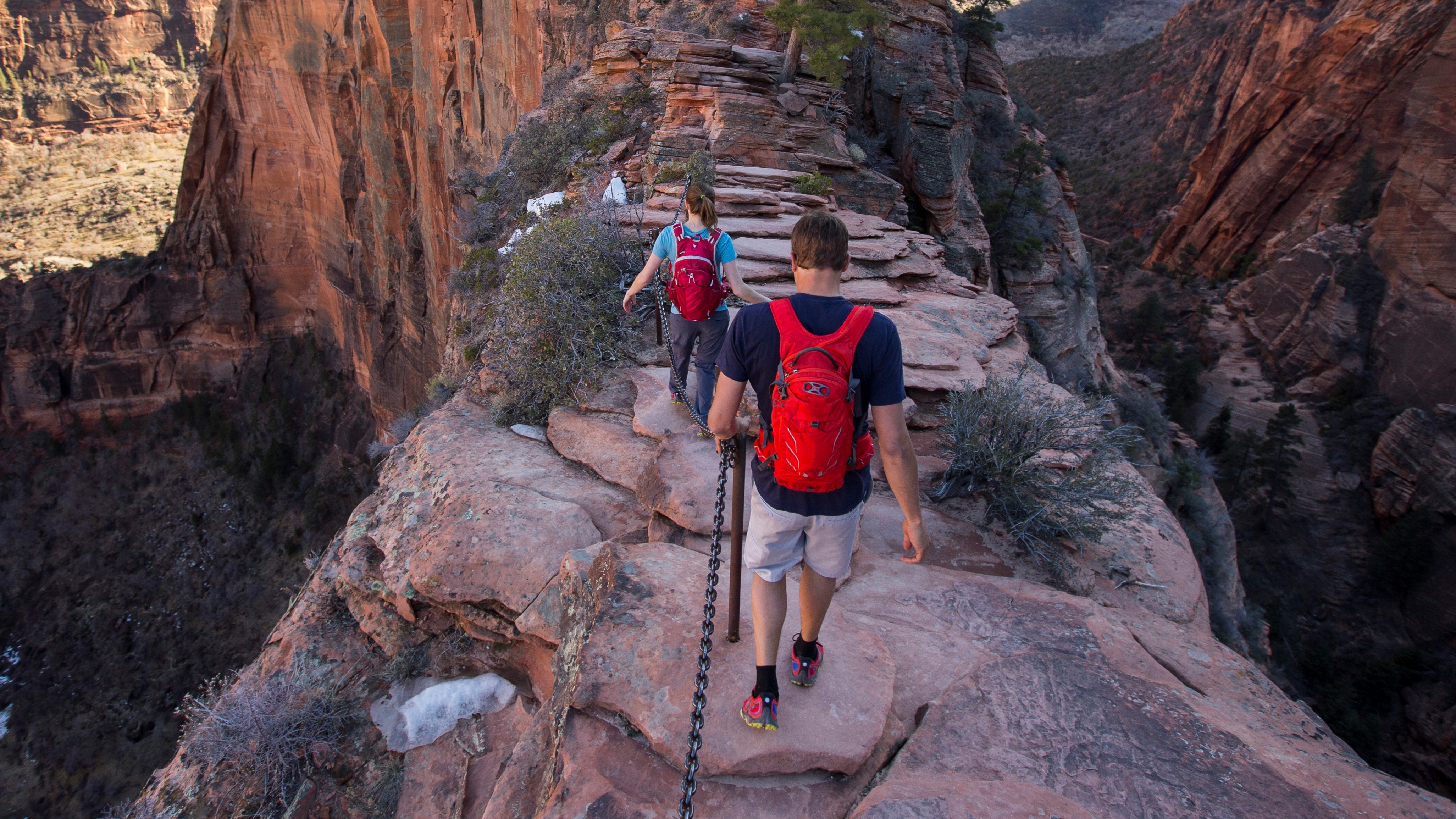
If you go on an organized hiking trip this summer, in addition to the usual safety briefing (stick together, bring plenty of water, wear sunscreen) you might also be asked to refrain from geotagging scenic spots when you share photos on Instagram. The idea is to limit the number of people flocking to particularly pretty spots in search of the perfect photo, and it's been a real hot button topic in the outdoor community for several years now.
If you're not familiar with the term, 'geotagging' simply means labelling a social media post (typically on Instagram in this case) with your location. The Instagram app can use your phone's GPS to give an exact position, or you can enter something manually if you prefer, making things as vague or specific as you like. If someone likes the look of a place, they can head out and explore it themselves – and therein lies the issue.
It's something the platform itself encourages, and posts with geotags often receive much more engagement than those without (up to 79% more according to social media management company SproutSocial), but many groups are firmly against it.

It's certainly true that excess visitor numbers can be harmful to an area, and Instagram has a particularly bad reputation for encouraging people to trample wildlife and one another in their quest for likes and follows. In Siberia, for example, flower growers have struggled for years with photographers trespassing on their fields to take pictures for the Gram, and in 2019 city officials had to close off areas near Lake Elsinore, California, after tens of thousands of visitors descended to capture selfies in a 'superbloom' of poppies.
It's the same with picturesque walks. Writing for The Guardian, hiker and editor Aram Mrjoian explains that 'viral hikes' can lead to overcrowding and disruption to local communities.
Social media might even be part of the reason why so many people die at Angels Landing in Zion National Park. The trail's dramatic and picturesque sheer drops became so popular that the crowds eventually became dangerous and the park had to implement a permit system to keep numbers down to reasonable levels.
"When you’re posting a photo from your last hike or climb, don’t tag the specific location – which can often be laughably wrong anyway — and instead just tag a more general location or none at all.," suggests Modern Hiker. "The point here is not to hide places from people – just to obscure them a bit from the photo-skimmers."
All the latest inspiration, tips and guides to help you plan your next Advnture!
As Conde Nast Traveler reported in 2019, some skiing groups even went so far as to encourage deliberately mislabelling photos.
Us and them?
Visiting an area after spotting a geotag doesn't necessarily make you a bad hiker. In fact, many argue that there's something elitist about the #nogeotag movement, as it alienates people and excludes those who aren't part of the 'in crowd'. On one hand there are 'genuine' hikers who learn about places through word of mouth, and on the other there are outsiders – casual visitors who aren't part of that community and are only there for the aesthetic.
Melanin Base Camp, which promotes ethnic diversity and LGBTQ+ participation in outdoor activities, suggests that this attitude is a form of gatekeeping that unfairly discriminates against people from cities who haven't had the privilege of exploring the outdoors before.
Instead, writer Danielle Williams suggests that organizations currently lamenting the use of geotagging should focus on tactics like working with brands and conservation groups to educate the public about environmental scholarship, and paying influencers to promote less crowded state and local parks.
The decision to geotag or not is a very personal one, and there are strong arguments both ways. Perhaps the best approach is to consider each photo on a case-by-case basis, and think about what will be most helpful to fellow explorers of all stripes.

Cat is the editor of Advnture, She’s been a journalist for 15 years, and was fitness and wellbeing editor on TechRadar before joining the Advnture team in 2022. She’s a UK Athletics qualified run leader, and in her spare time enjoys nothing more than lacing up her shoes and hitting the roads and trails (the muddier, the better), usually wearing at least two sports watches.
